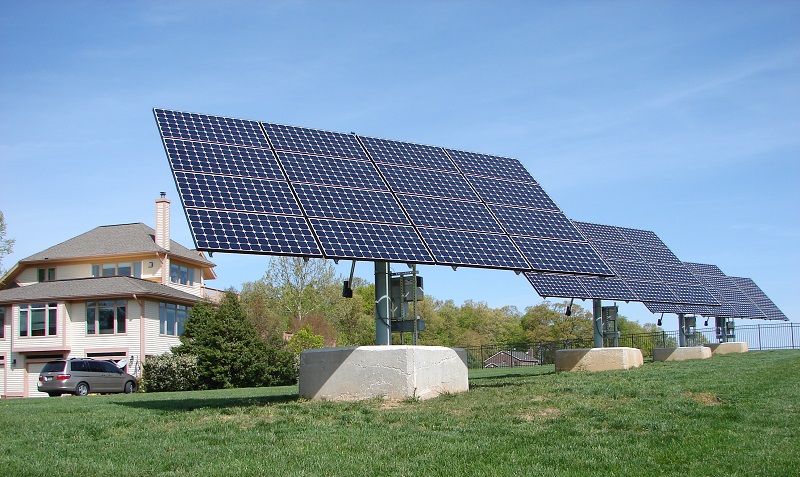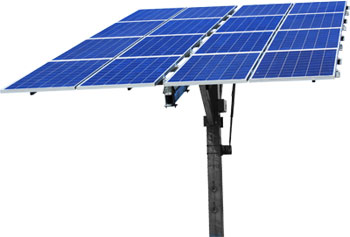Using a solar tracker to make photovoltaic panels more efficient
A solar tracker is not something people came up with in recent years. Actually, is not something people came up with at all. Solar tracking is a very common thing in botany, as all plants follow light. The most obvious flower is, off course, a sunflower. It follows the sun with its flower, turning it from east to west. This is the best possible way to make sure the plant gets enough sunlight for its natural processes, and something that modern solar technology looks up to.
Solar tracker and solar power
Solar energy is green, so more and more people decide to make use of it. Not only for their personal use (heating of their home), but also to sell it. And making solar energy a business, means there has to be a greater output than usual. Meaning everyone wants to get as much as possible out of their solar system. How is that possible?
Well, collectors on fixed mounts, placed on roofs or in the fields are not as efficient as they could be. Their position and angle are fixed, so they are static – they can’t follow the sun like sunflowers, so a lot of energy goes into nothing. That’s why solar trackers come in handy. They help to move/turn the panels, so they can follow the sun from morning until evening and get as much direct rays and make as much energy as possible. The output is bigger, so the investment in solar panels is even more sensible. The initial cost is paid out in a shorter period, so the business can start making profit sooner.
Solar tracker vs fixed mount – efficiency
Solar panels on fixed mounts collect maximum energy only at a certain time during the day, usually around noon and in early afternoon. They are mounted in a way that also takes in consideration different seasons and longitude. That means they are actually mounted in the optimal static position.
Panels with solar trackers (http://www.solar-motors.com) are mounted in optimal position, but they are dynamic. Their position changes depending on the time of the day and season – theyare continually adjusted and actually follow the sun and therefore collect solar energy for the longest period of the day. The proportion derived from direst radiation is higher, therefore the panels are actually more efficient – they give a higher output. On general, the efficiency is one third or even 40% higher.
Solar tracker – types
Solar trackers can be fixed and have a moving mirror, or the whole collector can be moving. Both systems give maximal output no matter where the Sun is, because its rays always hit the collector.
Collectors with moving mirrors usually have a dual axis tracking system, where at least one axis is mechanized. They are programmed and operated by computer.
Single axis systems move in one direction, usually from east to west. Double axis systems move from east to west and vertically at the same time. This means they don’t only follow the Sun from sunrise to sunset, but also recognize the difference in the Sun’s height (depending on the season).

How to choose a solar tracker
The main consideration is investment, off course. Solar trackers can be pretty expensive, so decision must be made on precise calculations. Sometimes it’s not even sensible to spend money on a tracker – it’s better to use the money for more solar panels and the output is the same.
Single axis trackers collect 27 to 32 percent more energy, and dual axis trackers 33 to 38. This is a big deal for big solar energy producers, who can afford to invest in solar fields – drives and materials for trackers can have highs costs, as they need to be accurate and also resistant to wind, cold and heat. In case you’re thinking about a solar tracker for the panels you use to heat your water at home, “professional” solar trackers will probably be too expensive. But there’s always a choice – there are some trackers for home use that are less sophisticated and therefore cheaper, or you can even make one yourself (there are plenty of plans and tips on the internet, posted by people who actually did it).
https://www.youtube.com/watch?v=VQqpnAKf9cM

